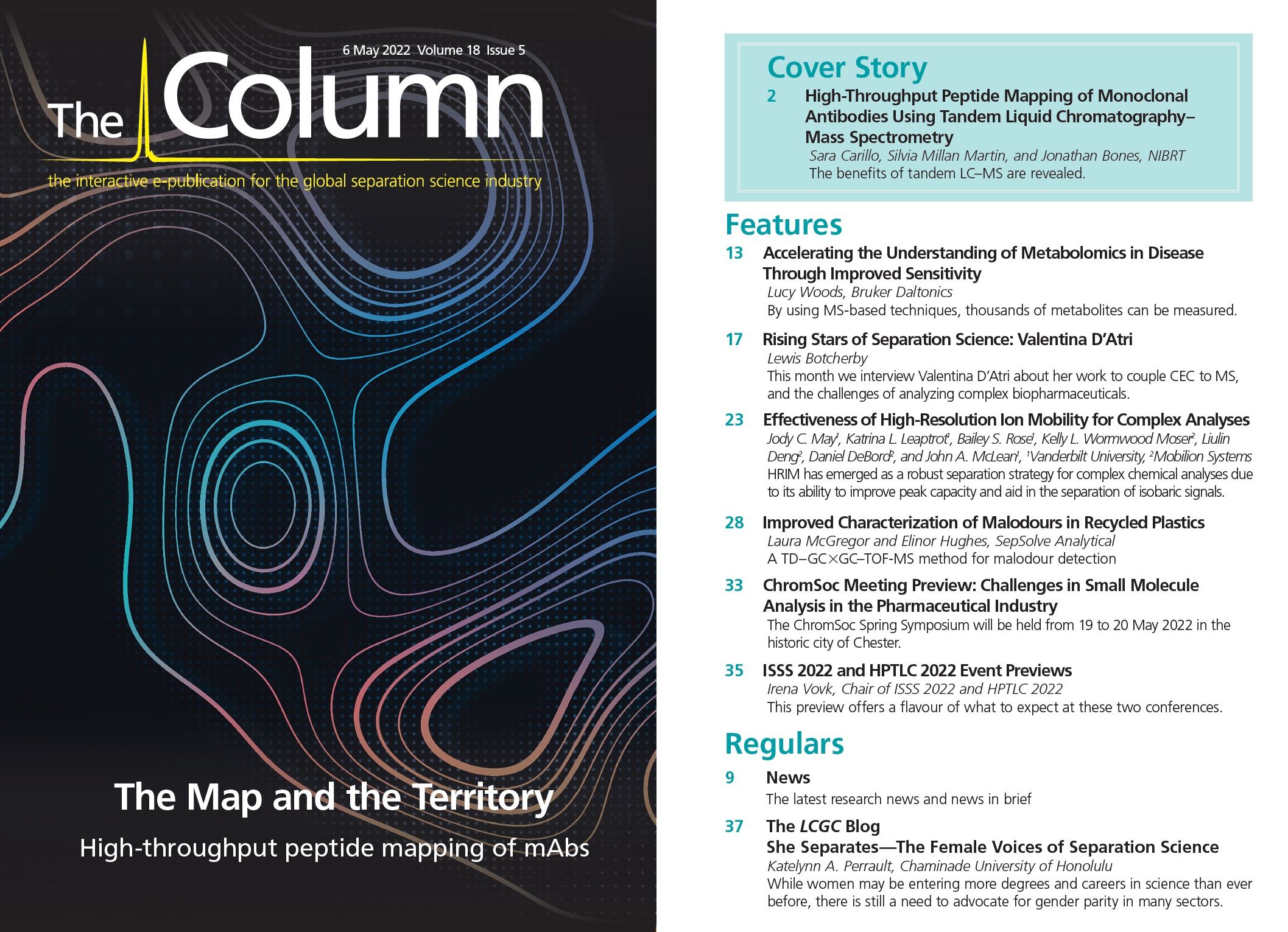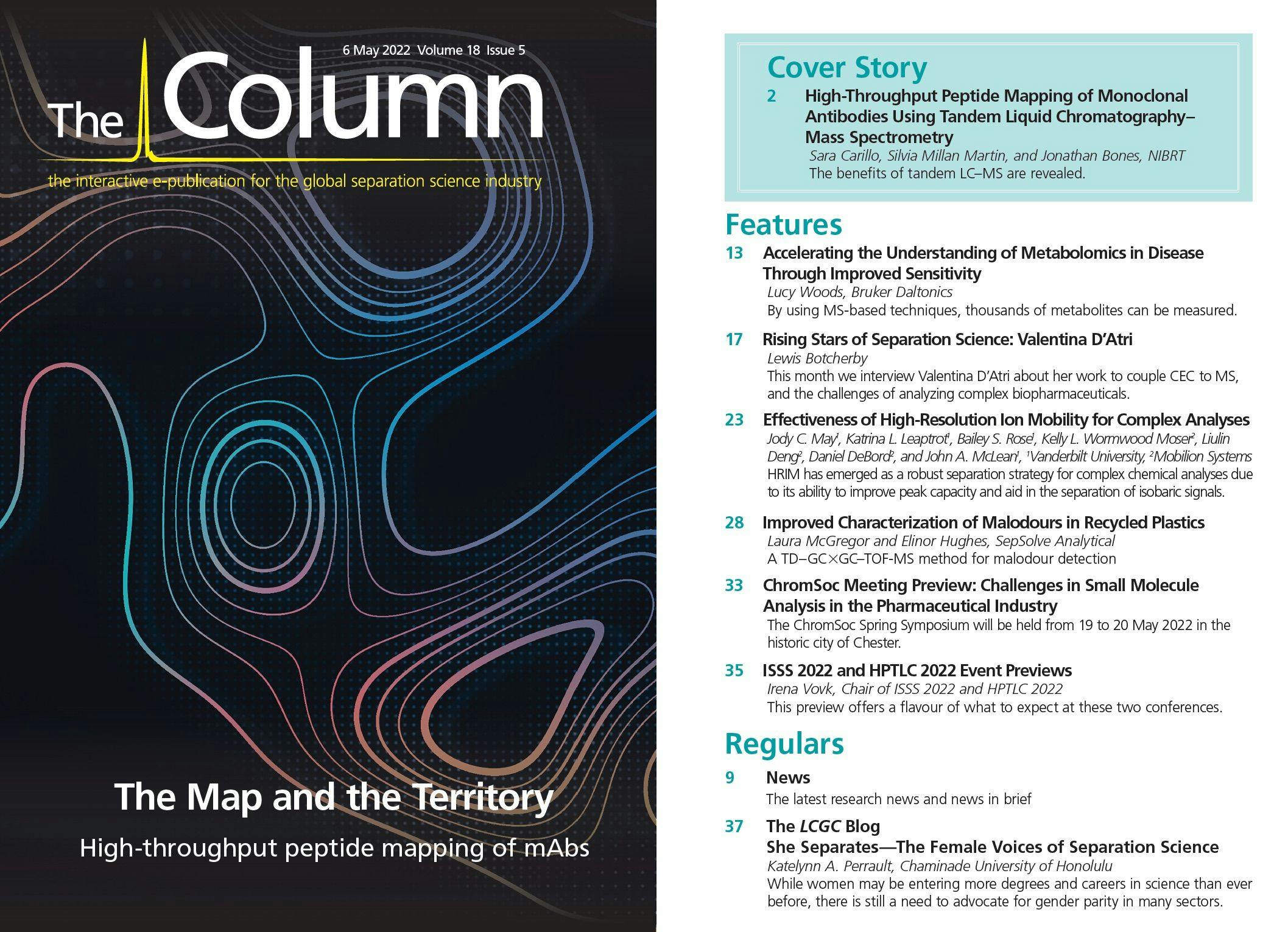Analyzing Road-Associated Microplastics Using Py-GC–MS
News of microplastic particles in the environment has become more and more common, however, there is still a significant deficit of data on one of the largest sources of these particles, as well as a lack of harmonization on how to analyze, quantify, and report study findings. Tyre and road wear particles could well constitute the largest source of microplastic particles into the environment, but without adequate analytical methodologies there will continue to be huge uncertainties surrounding their impact. As such, researchers have presented a new methodology utilizing pyrolysis gas chromatography–mass spectrometry (Py-GC–MS), which aims to improve the analysis of tyre and road wear particles (1).
Currently, visual analysis coupled to a chemical analysis step, such as Fourier‑transform infrared spectrometry (FT‑IR), is the most commonly applied method for microplastics. Unfortunately, the black pigment (carbon black) within tyre particles prevents the use of FT-IR, as the infrared light is absorbed, thereby preventing the identification of the rubber content (2). Thermal methods such as Py-GC–MS or thermal extraction desorption (TED-) GC–MS are instead being favoured. These methods use the products of thermal decomposition as markers to identify and quantify polymers and rubbers that can be potentially used to identify specific tyre and asphalt markers, as well as assess the amount of rubber released into the environment.
The composition of the tyre and road asphalt adds a further layer of complexity to this analytical challenge, with a wide range of ingredients, production variability, and other factors combining to present a conundrum to analysts. Which compounds represent the best markers for analysis? Researchers chose to analyze styrene-butadiene rubber (SBR), butadiene rubber (BR), and styrene-butadiene styrene (SBS), with SBR and SBS having never been explored as potential markers using pyrolysis. The study aimed to quantify the total mass of these products in environmental samples, combining multiple pyrolysis products for the quantification to compensate for the individual differences between tyre manufacturers. Furthermore, the method also explored the ability to calculate the total mass of tyre and polymer-modified bitumen (PMB)—the latter being used in asphalt—using different calculation approaches based upon available traffic data, sample locations, and the sample time.
The results indicated that the method provided high recoveries of 83–92% for a tyre matrix and from 88% to 104% for road sediment. When the validated method was applied to urban snow, roadside soil, and gully-pot sediment samples, the concentrations of tyre particles in these samples ranged from 0.1 mg/mL to 17.7 mg/mL in snow and from 0.6 mg/g to 68.3 mg/g in soil/sediment. The concentration of PMB ranged from 0.03 mg/mL to 0.42 mg/mL in snow and from 1.3 mg/g to 18.1 mg/g in soil/sediment.
By combining large datasets of tyres with a prediction simulation, researchers believe that this method is an improvement on current methodologies. Predicting the possible tyre values based on the variation in rubber content offers a mean value and a standard deviation of that value. This in turn decreases the uncertainty found in methodologies that use fixed rubber concentrations to calculate the mass of tyres in the environmental samples. The team highlight the importance of clearly communicating the difficulties in analyzing tyre matrices but also how the use of locally adapted values could improve data and provide relevant information to environmental researchers.
References
- E S. Rødland et al., J. Hazard. Mater. 423(A), 127092 (2022). https://doi.org/10.1016/j.jhazmat.2021.127092
- B. Baensch-Baltruschat et al., Sci. Total Environ. 733, 137823 (2020).

Removing Double-Stranded RNA Impurities Using Chromatography
April 8th 2025Researchers from Agency for Science, Technology and Research in Singapore recently published a review article exploring how chromatography can be used to remove double-stranded RNA impurities during mRNA therapeutics production.
The Effect of Time and Tide On PFAS Concentrations in Estuaries
April 8th 2025Oliver Jones and Navneet Singh from RMIT University, Melbourne, Australia discuss a recent study they conducted to investigate the relationship between tidal cycles and PFAS concentrations in estuarine systems, and offer practical advice on the sample preparation and LC–MS/MS techniques they used to achieve the best results.


















